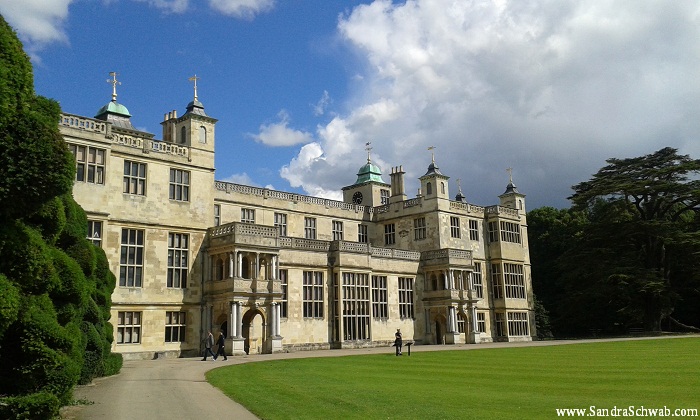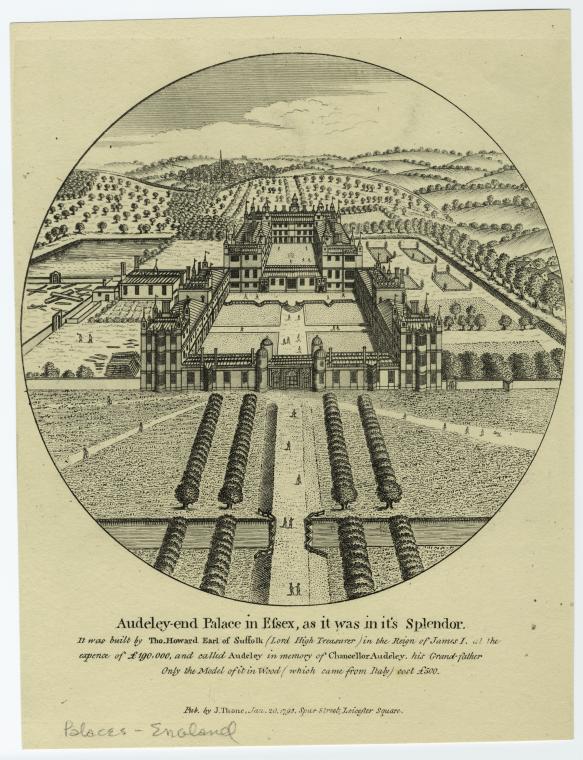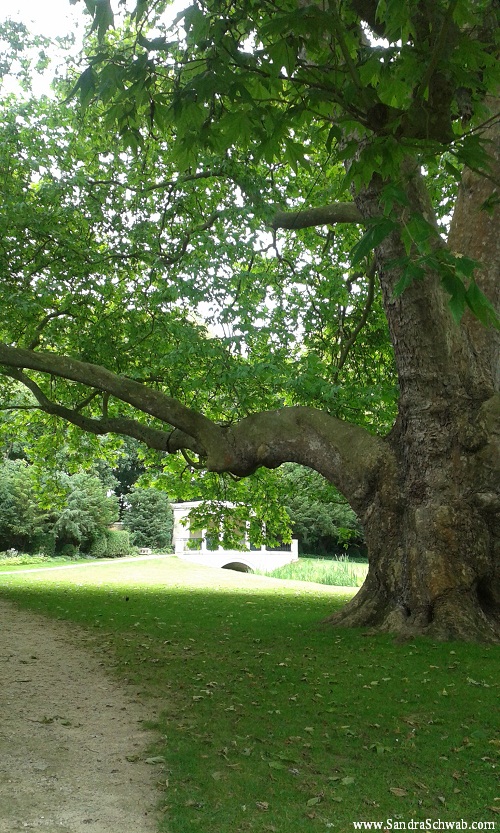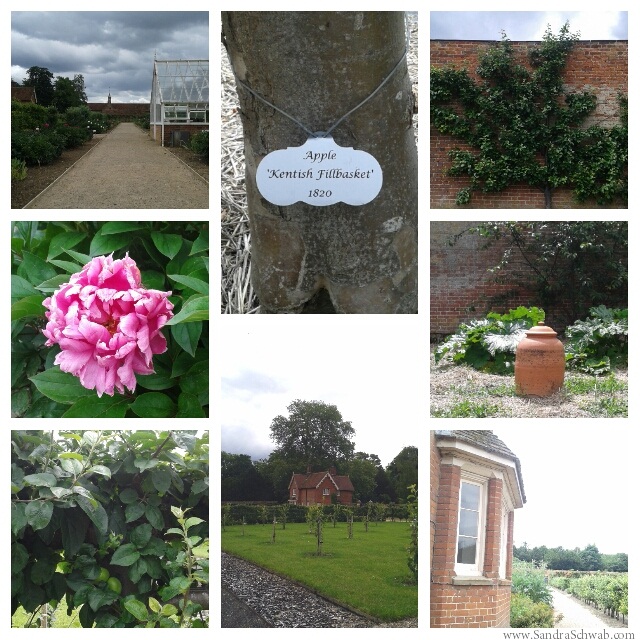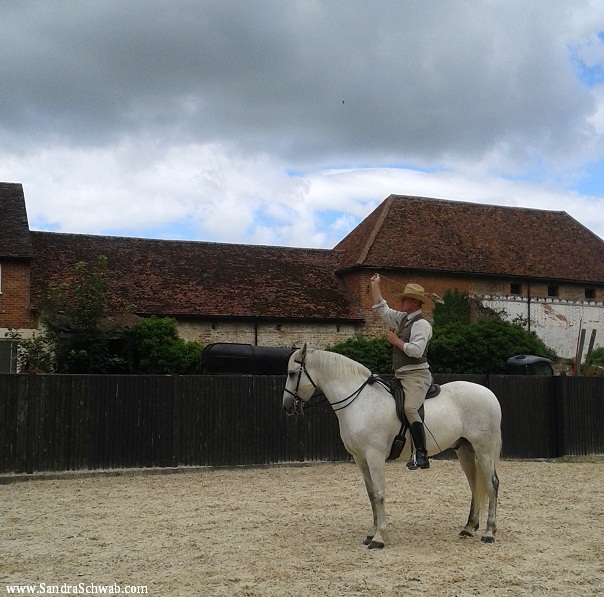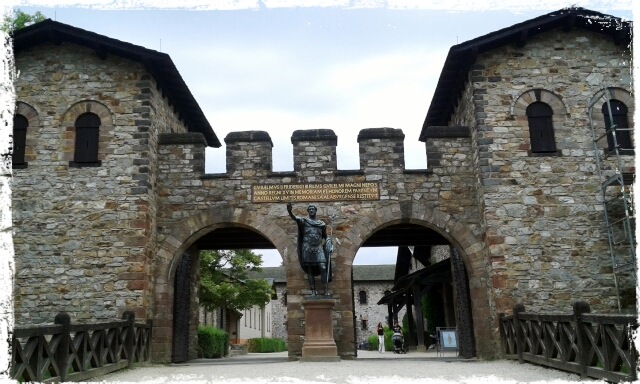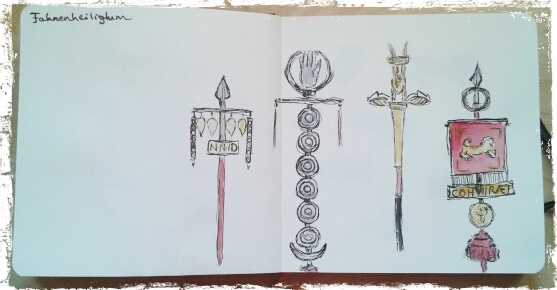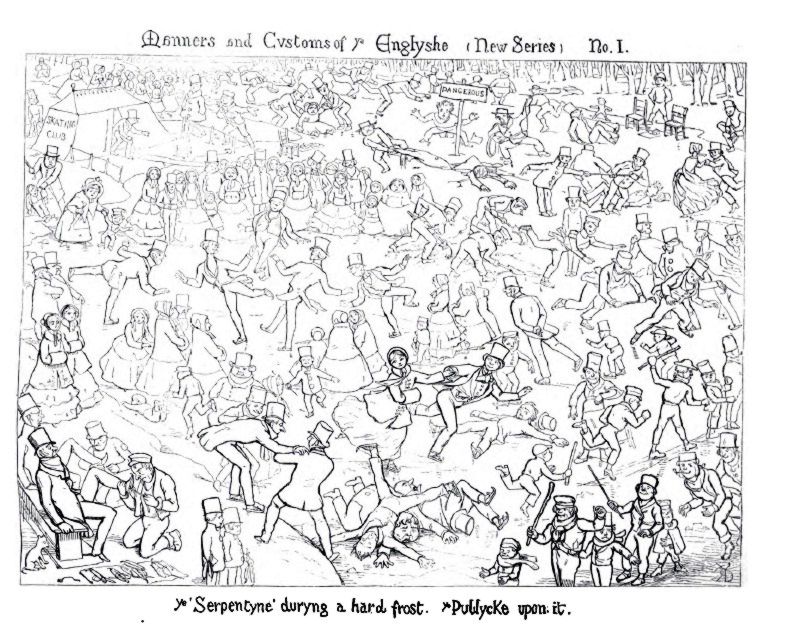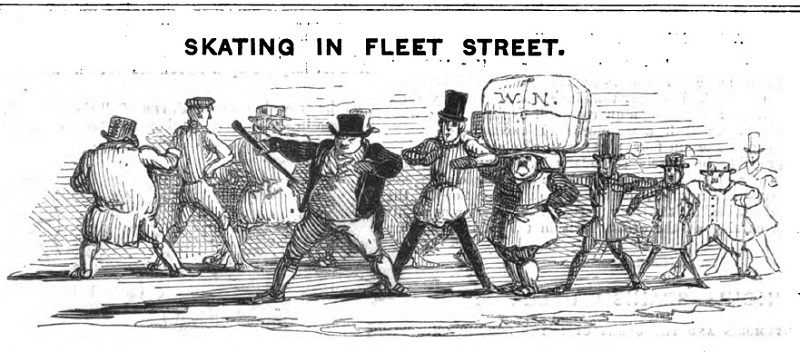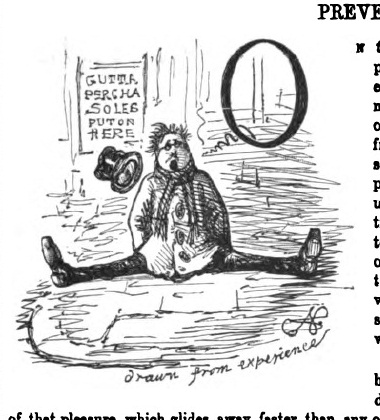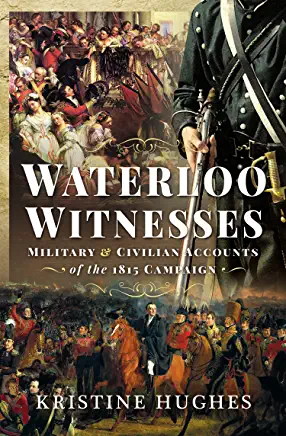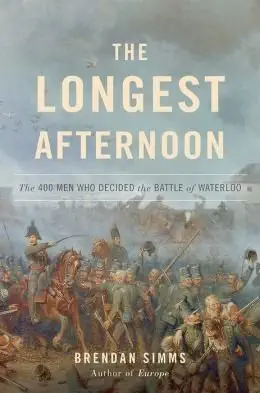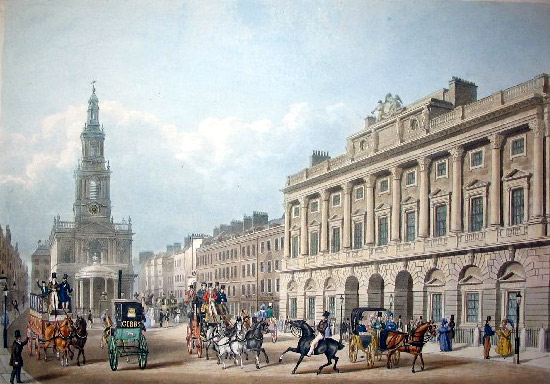
The Strand, with Somerset House and Mary-le-Strand church. Published by Ackerman, 1836 (from Wikipedia)
This year I’m back in Victorian London, and as it so happens I’ve got a couple of new research books, among them Voices from Dickens’ London by Michael Paterson from 2006 (republished as Inside Dickens’ London). Right in the introduction Paterson makes a claim that I found both daring and electrifying:
“The city of Dickens is a place lost to us beyond recall. It is difficult to imagine its dirtiness and dnager and its extremes of wealth and poverty. Its people did not look, speak, smell or behave like us. The ways they dressed, the times at which they ate, the slang they used and the accents in which they talked, the ways in which they worked or celebrated or took their amusements, often bear no resemblance to our experience” (10).
As somebody who has walked through London several times, often with the specific intention tracing the sights and buildings of the early 19th century, I found Paterson’s claim rather outrageous at first. After all, isn’t it our shared human experience that allows us modern readers to connect to characters in the literature of the past as well as to characters in historical fiction?
Today’s London is noisy and dirty and smells of exhaust fumes. Add to that the stink of piss and garbage in the back streets. How much worse could 19th-century London have been? There would have been different smells, of course, not of exhaust fumes, but of horses and…
Open sewers.
Cess pits.
A river that stank to heaven and spread illness and disease.
The smell of this old London, Paterson writes,
“must have been overwhelming. First, there was the smell of coal fires.. The vast forest of reeking chimneys filled the air with smoke, which covered buildings with unsightly layers of soot and left dirty black smuts on clothes and faces. There were the multifarious stenches of industry: breweries, foundries and forges, chemical works and, worse than all of them, tanneries […]. There was also the aroma of horses, on which so much of London’s transport and commerce depended — the smell of a stable multiplied millionfold. There was the scent of hundreds of thousands of people, whose tightly packed lives did not allow them opportunities to keep themselves, their clothes or their homes clean” (18).
And as to the noise —
“However noisy today’s traffic may be, it is insignificant by comparison with the din that filled the city in Dickens’ time. Countless iron-shod wheels rattled all day over cobbled streets behind clopping horses. Shouting was constant as, without any form of traffic control, drivers relied on aggression to push their way through the crush of vehicles. The sounds, thrown back by the walls of narrow streets, was so loud that it would not be possible to hold a conversation on the pavement, nor to leave street-facing windows open in summer” (17).
An exaggeration? Perhaps, for after all, the street sellers were still able to hawk their wares. And there were street musicians, too — Italian boys with barrel organs or harps — and street performers of every kind.
No Big Ben, of course.
Some of the things Paterson considers strange — like the closure of all shops and museums on Sunday — don’t seem quite so strange to those who have a different cultural background than the author (in Germany, shops are closed on Sunday).
And yet, the London that emerges from the pages of Paterson’s book is indeed very different from the London of today. It also differs markedly from the London you get to see in most of those pretty TV adaptations of 19th-century literature (with Dickens adaptation being the big exception).
As the title suggest, Voices from Dickens’ London relies heavily on primary texts by Victorian journalists, authors, and everyday people, which are quoted extensively (though not always quite accurately: ellipses are often unmarked). This makes Paterson’s book both fascinating reading material and a rather fantastic source — one I can highly recommend.
I wrote this post yesterday. Today, London was once again hit by catastrophe: This morning, a devastating fire started in Grenfell Tower in Kensington and killed and injured many people. My thoughts are with all those affected by the fire.

